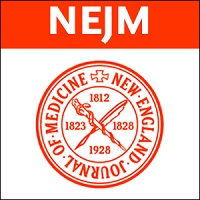Abstract
Background High-density lipoprotein (HDL) may provide cardiovascular protection by promoting reverse cholesterol transport from macrophages. We hypothesized that the capacity of HDL to accept cholesterol from macrophages would serve as a predictor of atherosclerotic burden. Methods We measured cholesterol efflux capacity in 203 healthy volunteers who underwent assessment of carotid artery intima–media thickness, 442 patients with angiographically confirmed coronary artery disease, and 351 patients without such angiographically confirmed disease. We quantified efflux capacity by using a validated ex vivo system that involved incubation of macrophages with apolipoprotein B–depleted serum from the study participants. Results The levels of HDL cholesterol and apolipoprotein A-I were significant determinants of cholesterol efflux capacity but accounted for less than 40% of the observed variation. An inverse relationship was noted between efflux capacity and carotid intima–media thickness both before and after adjustment for the HDL cholesterol level. Furthermore, efflux capacity was a strong inverse predictor of coronary disease status (adjusted odds ratio for coronary disease per 1-SD increase in efflux capacity, 0.70; 95% confidence interval [CI], 0.59 to 0.83; P<0.001). This relationship was attenuated, but remained significant, after additional adjustment for the HDL cholesterol level (odds ratio per 1-SD increase, 0.75; 95% CI, 0.63 to 0.90; P=0.002) or apolipoprotein A-I level (odds ratio per 1-SD increase, 0.74; 95% CI, 0.61 to 0.89; P=0.002). Additional studies showed enhanced efflux capacity in patients with the metabolic syndrome and low HDL cholesterol levels who were treated with pioglitazone, but not in patients with hypercholesterolemia who were treated with statins. Conclusions Cholesterol efflux capacity from macrophages, a metric of HDL function, has a strong inverse association with both carotid intima–media thickness and the likelihood of angiographic coronary artery disease, independently of the HDL cholesterol level. (Funded by the National Heart, Lung, and Blood Institute and others.)








